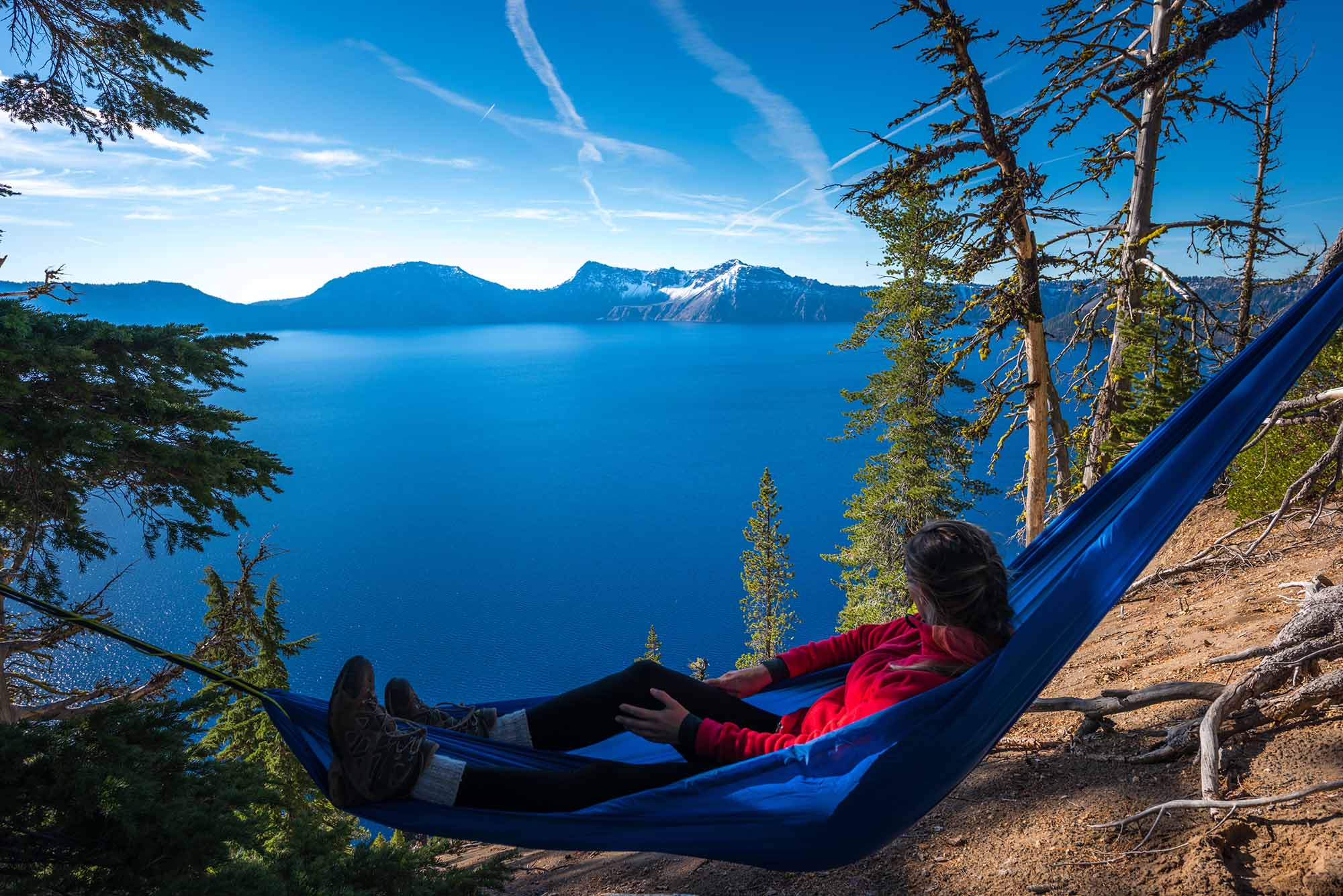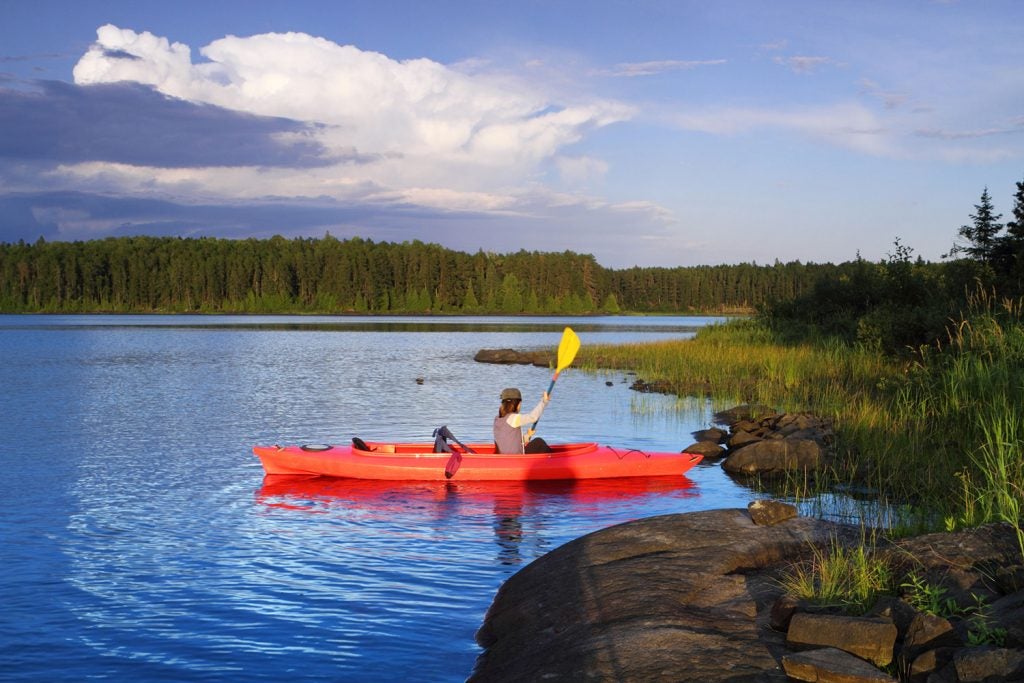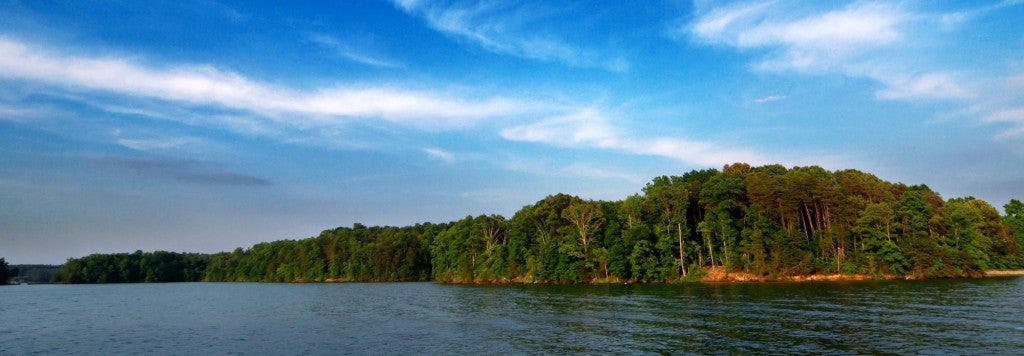With summer now in reach, countless campers and outdoors lovers are gearing up for a season full of sandy beaches, swimming holes and warm-weather fun on the water. Some may think that coastal beaches gather all the acclaim, but if you’re a savvy explorer looking for less-crowded freshwater fun, inland lakes in Oregon offer what you seek.
Oregon—despite being known for its vast forests—offers lakeshore camping in secret (and not so secret) hideaways from Mount Hood National Forest to Southern Oregon. The vast majority of lake camping in Oregon lies in the Cascade Range, a major mountain range that extends from British Columbia all the way to Northern California, and a major contributor to the formation of lakes in Oregon.
In the Cascades, glacier-covered volcanoes and other snowcapped peaks provide a perpetual source of water. Gravity pulls all that water downward in the form of countless mountain streams, wild rivers, and roaring waterfalls. In many places, valleys and other depressions have collected both precipitation and meltwater over the ages, creating gorgeous ponds and lakes—with untouched shorelines just waiting for campers to explore.
10 Awesome Destinations for Camping at Lakes in Oregon
It’s these pristine lakes in Oregon that offer the best camping. Here are some of The Dyrt campers’ favorite spots across the state.
1. Diamond Lake Campground
Stretching out along much of the eastern shore of Diamond Lake, the Diamond Lake campground offers some of the most scenic lake camping in Oregon. Nestled between the Umpqua National Forest‘s Mount Thielsen and Mount Bailey, this is an extremely popular summer destination with beautiful views of each peak from the water—and attracting no fewer than 700,000 visitors each year.
You can pitch your tent or park your RV at one of the 238 campsites at Diamond Lake campground, all of them equipped with fire pits and picnic tables. Fifty-one of those actually rest right on the lake. The campground is a great base to explore Umpqua National Forest and visit places like Toketee Falls or Umpqua Hot Springs. Additionally, you’ll be under 20 minutes away from Crater Lake National Park to the south.
“Diamond Lake Campground, true to its name, hugs the water with incredible, clear mountain views. Kayak and other boat rentals are available, and the kids will love the bumper car boats near the dock. There is a well-stocked general store. Lots to do, plenty of creature comforts, and gorgeous views. Plus you are super close to Crater Lake and Umpqua Hot Springs.” —The Dyrt camper Meghan O.
2. Trillium Lake Campground
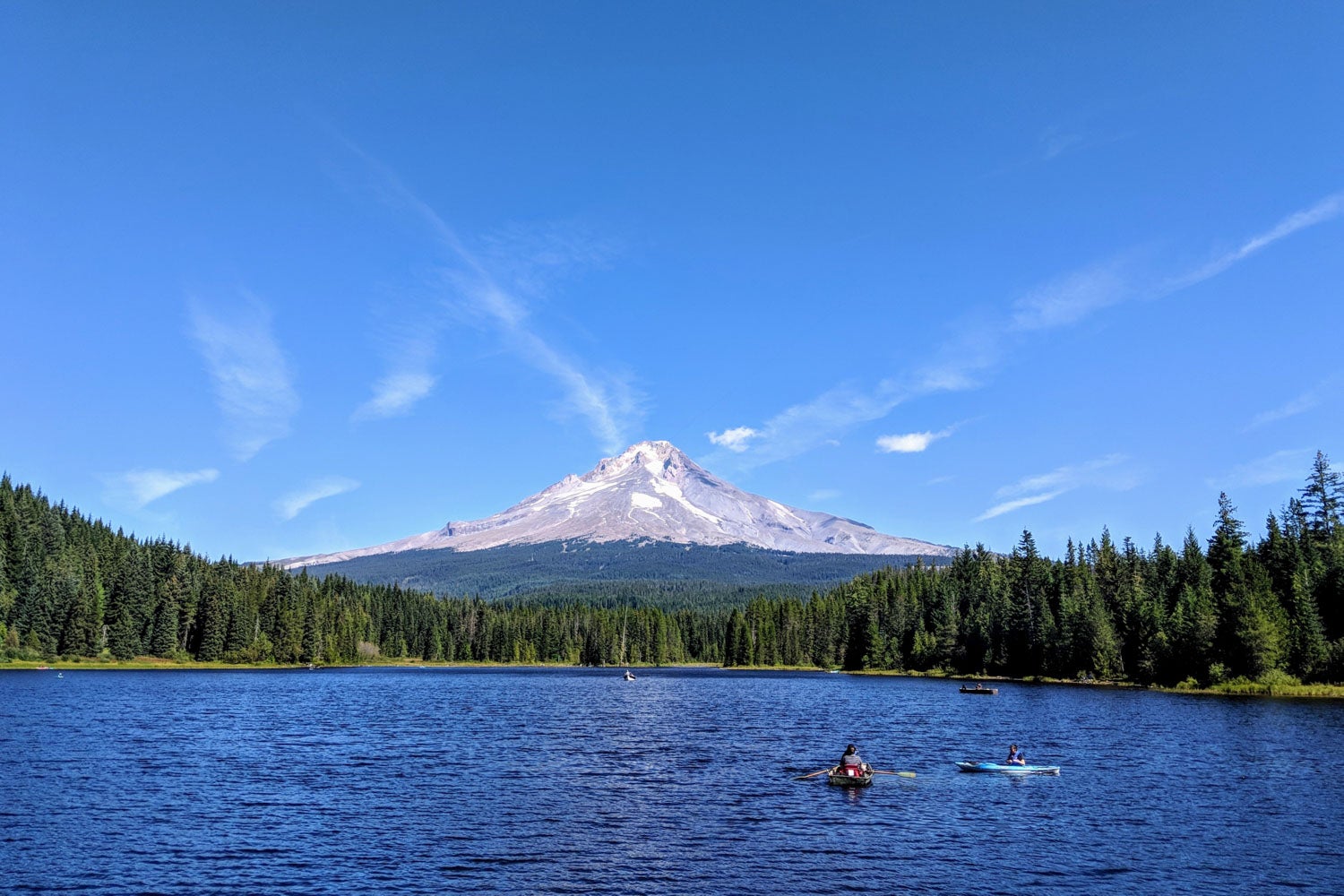
Image from The Dyrt camper Dexter A.
The most popular campground in the Mount Hood National Forest, the Trillium Lake campground lies on the shore of shimmering Trillium Lake and offers fantastic views of Mount Hood itself. Of all the lakes in Oregon, Trillium is one of the most famous for its abundant recreational opportunities, from fishing and boating to hiking and cycling—all just 90 minutes from Portland.
Dozens of single and double campsites can accommodate both tents and RVs alike. Vault toilets and drinking water are available, as well as a large picnic shelter and amphitheater. In the summer, educational ranger programs are held on the weekends.
“A classic camping spot with an amazing view of Mt. Hood across Trillium Lake. The campground is nestled deep in old-growth forest with spacious sites and running water. The best feature though, is the easy access to the trails and fishing at Trillium Lake, and proximity to Mt. Hood.” —The Dyrt camper Eric L.
3. Detroit Lake Campground
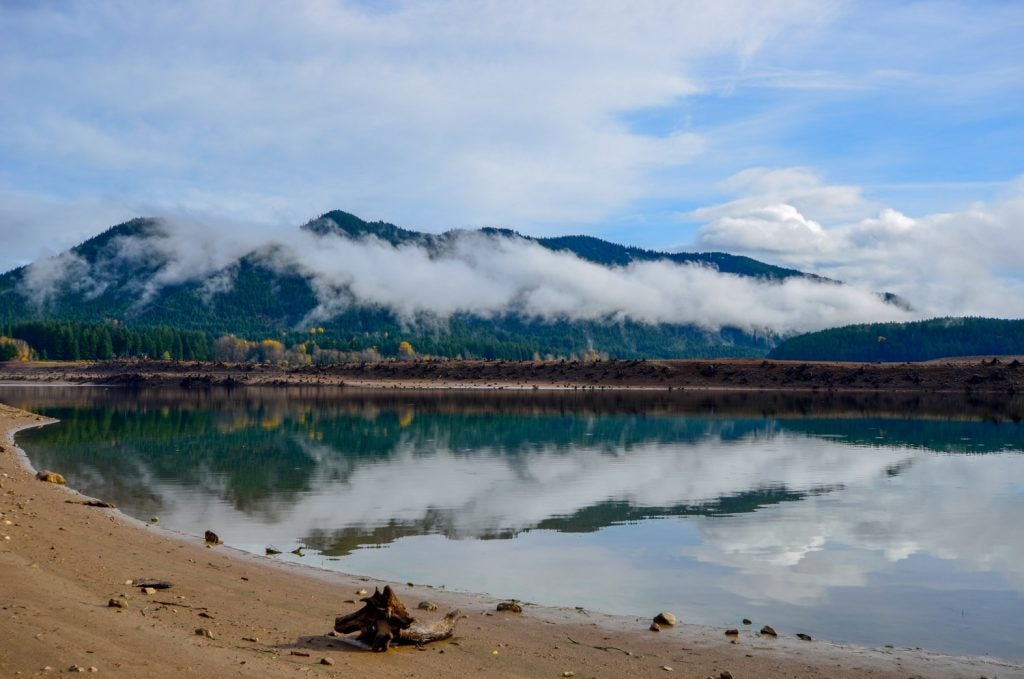
Image from The Dyrt camper Jill T.
Resting below Mount Jefferson in the Willamette National Forest is one of Oregon’s premier outdoor adventure hubs—the Detroit Lake State Recreation Area. Featuring boat launches for everything from canoes to jet skis, water lovers can visit Detroit Lake in the peak season and get lost in Oregon’s rugged wilderness. Note that, because the lake is created by a dam, the water level is sometimes rather low. Especially from late-summer to spring, there may not be enough water in the lake to allow for boating.
The Detroit Lake Campground has almost 300 sites right on the shore of this reservoir. There are flush toilets and showers, swimming areas, boat launches and day-use areas. A visitor center has information, souvenirs, ice, drinks, firewood and other goodies that make this a great spot for families to go lake camping in Oregon.
“We’ve been camping at Detroit Lake for many years and love the beauty of the lake, the trees, and the mountain. We feel that the rangers are friendly and work to keep things looking clean and inviting. Campsites aren’t very far apart, however it seems like people in nearby campsites are always friendly and considerate for the most part.” —The Dyrt camper Lesa H.
4. Toketee Lake Campground
The “little brother” of nearby Diamond Lake, Toketee Lake is another pristine lake in Oregon for camping near the Umpqua National Forest. This lake is technically a larger break in the North Umpqua River, a nationally designated Wild and Scenic River. As far as lakes in Oregon go, Toketee offers a refuge to numerous wild animals, including otters and beavers, eagles, blue herons and kingfishers.
The Toketee Lake Campground is rather small, but undeniably well-located. It has 33 campsites with fire pits and picnic tables. There are two vault toilets and a boat ramp, but no drinking water. Fifteen sites are reservable, while the others are first come, first serve.
Toketee Lake is a quieter alternative to Diamond Lake, offering easy access Umpqua Hot Springs and the majestic Toketee Falls, making it one of the most varied places for lake camping in Oregon. If the campgrounds at nearby Crater Lake National Park are full, this is a worthy alternative as well.
“Great campsite for many activities in the area or a stop before Crater Lake. Very close to the Umpqua Hot Springs as well as, I’ve heard, awesome mountain bike single track. The campsites are fairly spacious with a nice fire pit and tables. However, there isn’t much privacy between sites. The bathrooms are typical NFS pit toilets and were very clean.” —The Dyrt camper Mitch H.
5. Wallowa Lake State Park
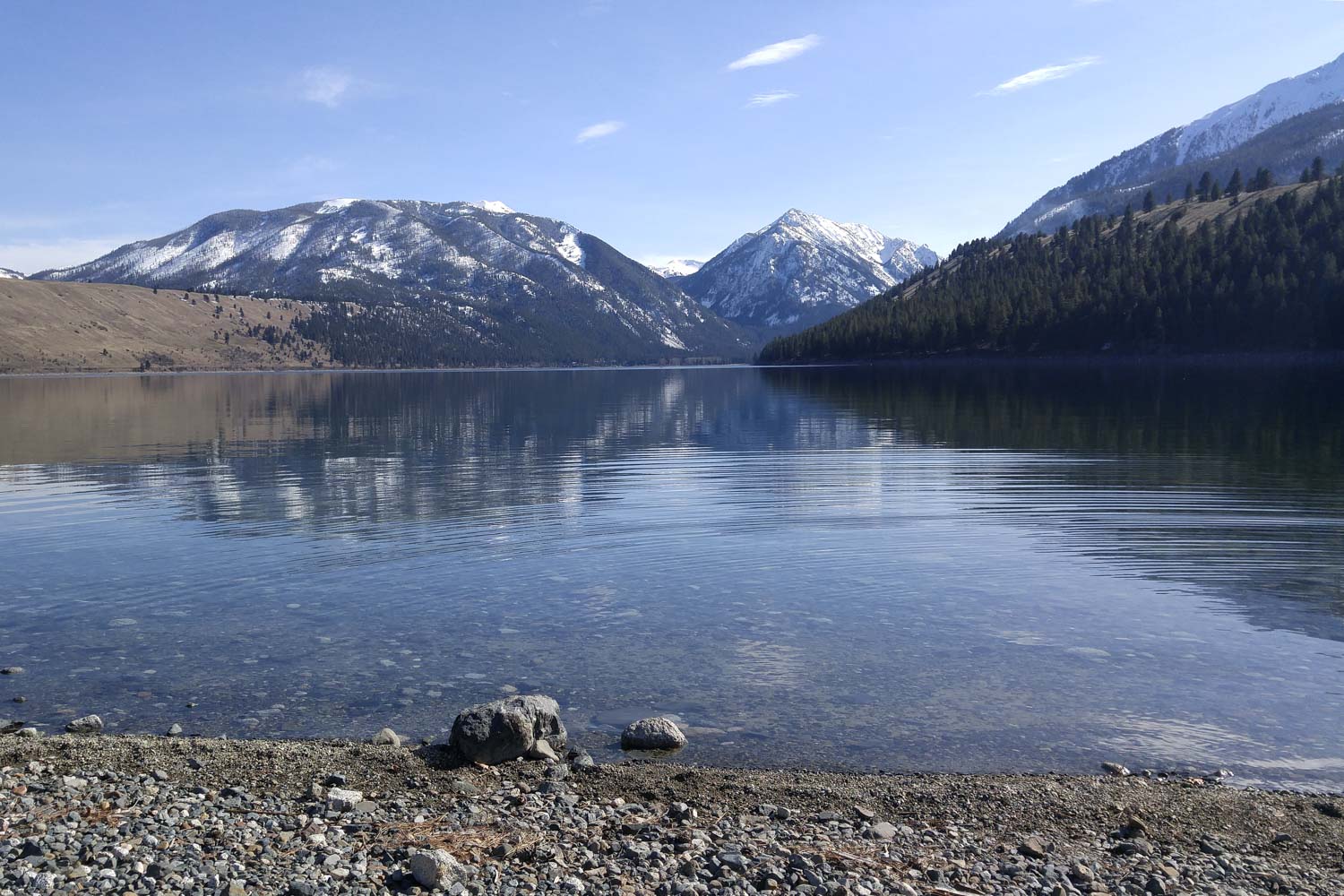
Image from The Dyrt camper Hollina P.
It’s easy to feel small relative to the earth when lake camping at Oregon’s Wallowa Lake-snowcapped mountains stretch over 9,000 feet tall, and surround the surface of the water on three sides in a scenic but intimidating way. Adjacent to the vast Wallowa-Whitman National Forest, Wallowa Lake State Park offers a mixture of extreme conditions for adventurers, and family-friendly fun on the shores.
Wallowa’s campground offers some of the widest variety of activities for lakes in ORegon from go-carts and mini-golf to horseback riding, hiking and mountain biking. A nearby thriving artist community is where you’ll find amazing bronze items for sale. And if that’s not enough, Wallowa Lake is also a great gateway to Hells Canyon, North America’s deepest river canyon.
The campground has 121 full-hook-up sites and 88 tents sites, as well as two yurts. There are showers, flush toilets and an RV dump station.
“I love this campground. It is near the lake, clean, with showers. There are go-carts and mini-golf nearby for families, and the gondola provides gorgeous views. You can hike, or ride up the mountains as well. Joseph is a great western and artistic community just at the other end of the lake.”— The Dyrt camper Joan H.
6. Lost Lake Resort and Campground
One of Mount Hood National Forest’s many stunning lakes, Lost Lake lies on the west side of the mountain, offering easy access to various hiking trails, such as the one to Ramona Falls. Other popular activities in the area include fishing, cycling, canoeing, kayaking and stand-up paddle boarding. At night, thousands of stars twinkle overhead.
The Lost Lake Campground at Lost Lake Resort has 148 campsites and can accommodate both RV and tent campers. There are pit toilets, a handicap-accessible fishing dock, a boat ramp and RV dump station. A well-stocked general store sells everything you might need during a camping trip at a lake in Oregon, from fishing tackle and camping gear to firewood, ice, groceries, and beer and wine.
“Lost Lake is pretty famous and didn’t disappoint. Large but private campsites on a gorgeous lake with a quintessential view of Mt. Hood. You can rent kayaks, canoes, fishing poles, etc. Lots of walk-in sites, however, this spot is very popular so in the high season. You may have the best luck going mid-week or early in the morning to claim a spot.”— The Dyrt camper Heather W.
7. North Waldo Campground
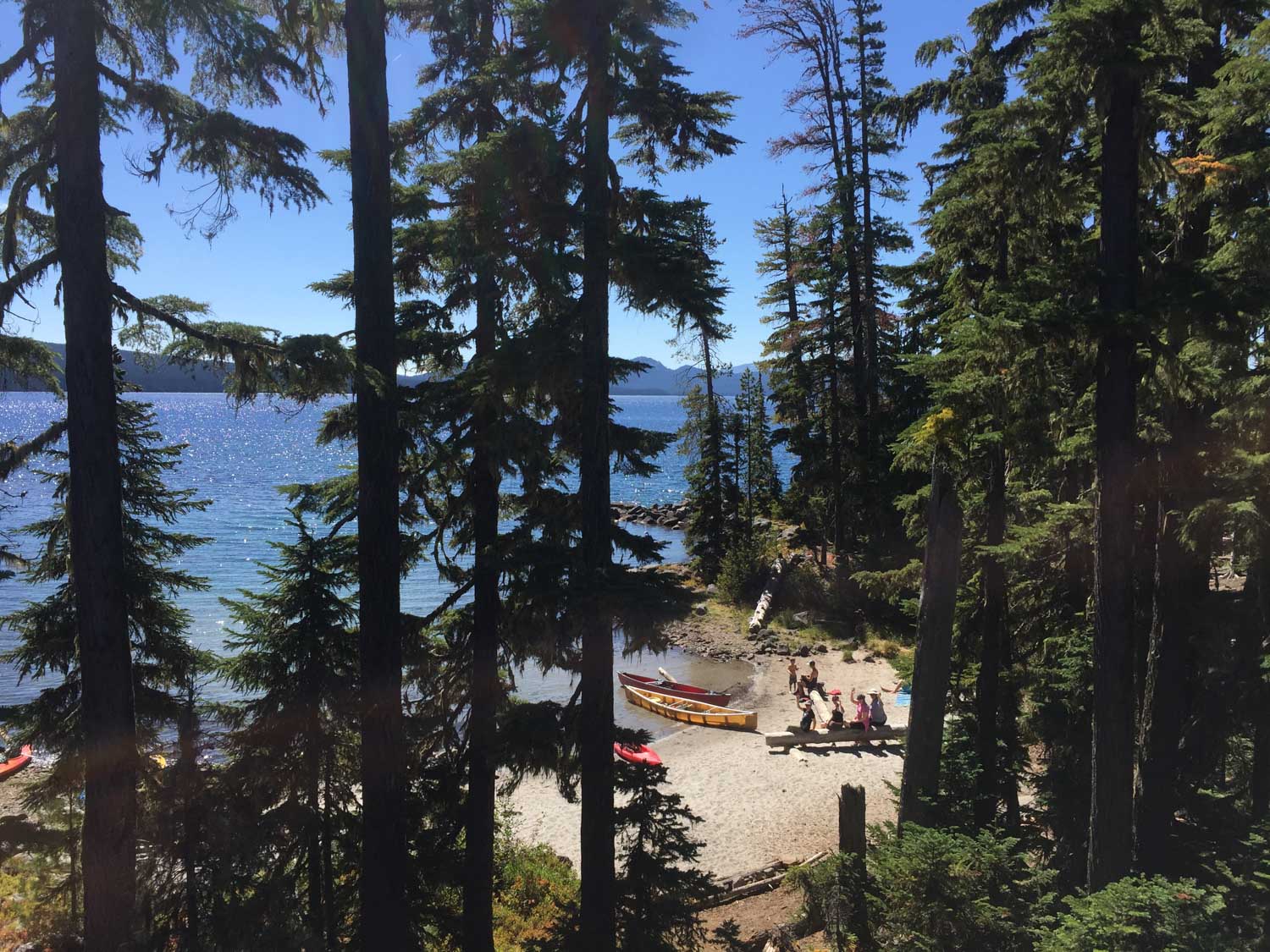
Image from The Dyrt camper Jen H.
Of the many campgrounds on the shore of Waldo Lake—one of the largest natural lakes in Oregon—the North Waldo Campground is the most popular for Waldo Lake camping in Oregon. Set right at the water’s edge, the campground is surrounded by the Douglas fir and western hemlock forests of Willamette National Forest. Without an inlet bringing in nutrients, the lake doesn’t have much plant life and is exceptionally pure. On a calm summer day, you can see up to 120 feet deep.
The campground has 58 sites, all with picnic tables and fire rings, an RV dump station, toilets, drinking water and a boat ramp. Half of the sites can be reserved, the other half are available on a first-come, first-serve basis. North Waldo is a great starting point for wilderness hikes in the area, while canoeing, swimming and sailing are, unsurprisingly, quite popular as well.
“Waldo Lake is a fantastic choice for any non-motorized boaters, as motors are banned. We took our kayaks out onto the large crystal-clear lake where you can see straight to the bottom. Since there are no motored boats, the lake and campground were very quiet and peaceful. There is also an extensive trail around the lake, which can be followed on foot or bike. Salt Creek Falls is just down the highway and makes for an excellent day hike. Would definitely recommend North Waldo for a relaxing camping trip.” – The Dyrt camper Ariel C.
8. Little Crater Lake Campground
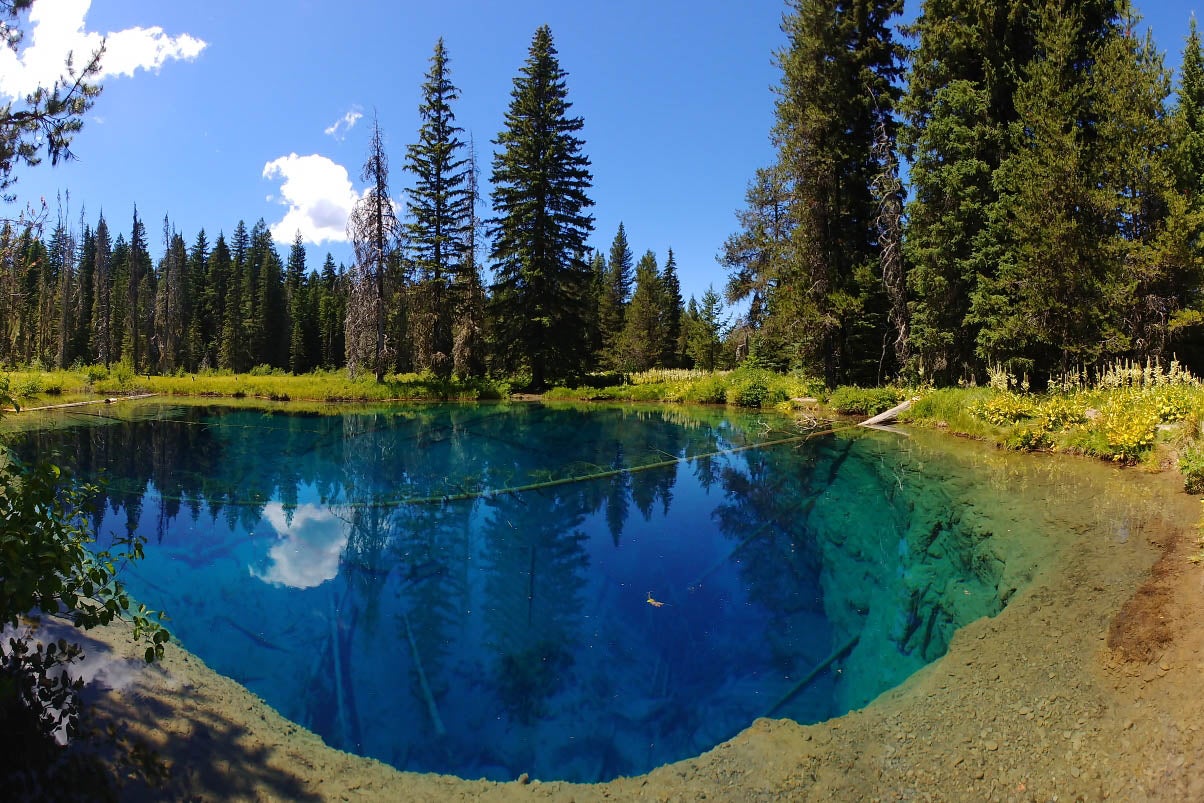
Image from The Dyrt camper Haley W.
Tucked-away in the Mount Hood National Forest, Little Crater Lake is a small, freezing-cold, spring-fed lake filled with almost-impossibly clear water. While this lake and its name may appear to be a mini-replica of Crater Lake, these lakes were created under different circumstances; while Crater Lake was formed from a volcanic eruption, Little Crated Lake was created by dissolving limestone deposits with an aquifer at its bottom. It’s constantly around 34 degrees Fahrenheit.
Although the Little Crater Lake Campground is not right at the lake, it still deserves a mention as one of the best places for lake camping in Oregon. The short Little Crater Lake Trail connects the campground and the lake, continuing toward the Pacific Crest Trail and nearby Timothy Lake. More than a dozen tent and RV sites are available, as well as vault toilets. There are no hookups.
“Absolutely amazing. Little Crater Lake is spectacular, and only a 5-minute walk from the campsites. Clean vault toilets, large campsites pretty well spaced out. Very quiet, 10 miles or so from the highway. Timothy Lake and the Pacific Crest Trail are less than a mile from camp. Mount Hood is nearby, although not visible from the campground. One of the best, if not the best, campgrounds I have visited.” – The Dyrt camper Darin D.
9. Walton Lake Campground
One of the most popular Lake destinations in Oregon’s Deschutes National Forest comes with awesome camping. Walton Lake rests amid a landscape of mountain meadows and old-growth ponderosa pine forests. Its serene setting attracts campers from all across the Pacific Northwest, people seeking peace and quiet and/or outdoor adventure.
You can hike the Walton Lake Trail, which loops around the entire lake, go mountain biking, swimming or canoeing. Home to countless bird species, such as kingfishers, woodpeckers, blackbirds and jays, the area is popular among bird watchers, too. For fishing lakes in Oregon, Walton is one of our favorite destinations because it is stocked with rainbow trout and catfish.
Sites at the Walton Lake Campground come with picnic tables and fire rings with grills. Vault toilets are available, as is drinking water.
“What a sweet place, it was nearly full when we stayed, but still felt as though we were in the woods camping. Spaces spaced apart, quiet, beautiful lake, many fishermen, my daughter swam in the Lake, and we took a short hike for a beautiful view. Also a short day trip from the Painted Hills in John Day (45 min) which is well worth the drive!” – The Dyrt camper Lauren B.
10. Clear Lake Campground
This lake in Oregon is situated just north of the Warm Springs Indian Reservation in the Mount Hood National Forest. The Clear Lake Campground features 28 spacious campsites on the edge of the frigid-but fun Clear Lake.
There are vault toilets and drinking water, but no hookups. A boat ramp offers easy access to the lake, which is great for sailing, swimming and trout fishing. However, Clear Lake is also used for irrigation purposes, so keep in mind that the water level may be rather low during dry spells.
This is a great Mount Hood alternative to the larger and busier campgrounds along the Mount Hood Scenic Byway. If you’d like an escape from the more crowded lakes in Oregon like Trillium Lake or Lost Lake, camping at Clear Lake is one of our favorite lakes in Oregon to get away at.
“We absolutely love this place. Big, clean, camping sites. Cabins are nice as well. The lake of course is the best part. Crystal-clear but COLD. Great fishing. They have a little restaurant where you can rent boats. Bathrooms are nice as well.”—The Dyrt camper Shelby W.
Related Articles:
Related Campgrounds:
- Natural Bridge Campground, Prospect, OR
- Lake of the Woods Camping, Klamath Falls, OR
- Black Lake Campground, Mount Hood National Forest, OR
- Group Campsites Oregon, Madras, OR
- Rogue River Campground, Prospect, OR
- Sacandaga Campground, Oakridge, OR
- Timothy Lake Campground, Government Camp, OR
- Waldo Lake Camping, Oakridge, OR
- Detroit Lake Oregon Camping, Detroit, OR
- Foster Lake Camping, Foster, OR
Popular Articles:
Articles on The Dyrt Magazine may contain links to affiliate websites. The Dyrt receives an affiliate commission for any purchases made by using such links at no additional cost to you the consumer.

